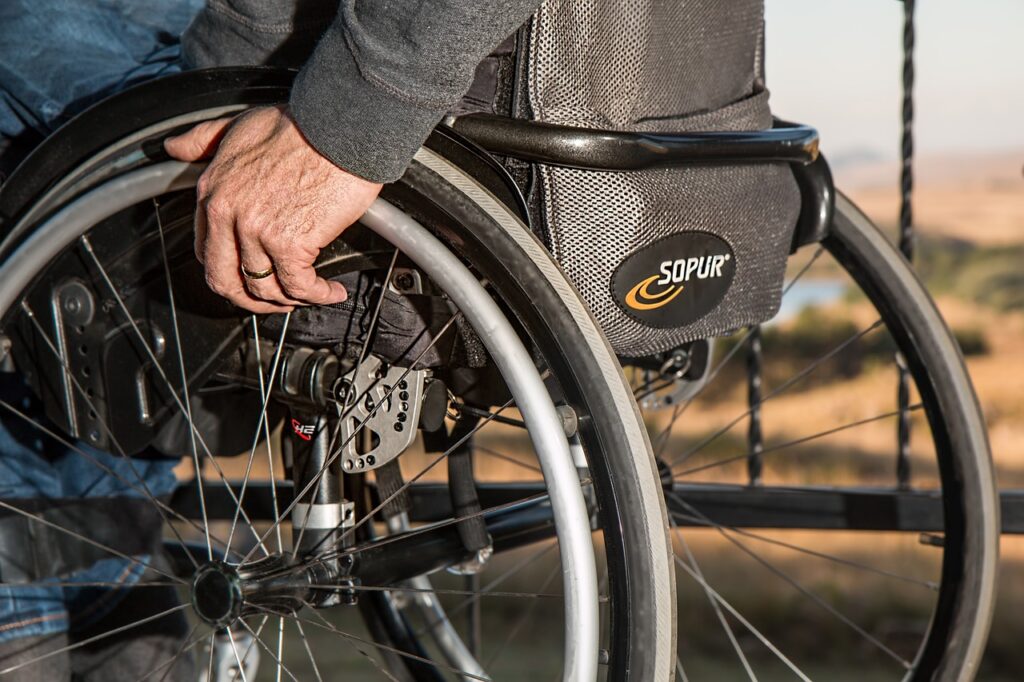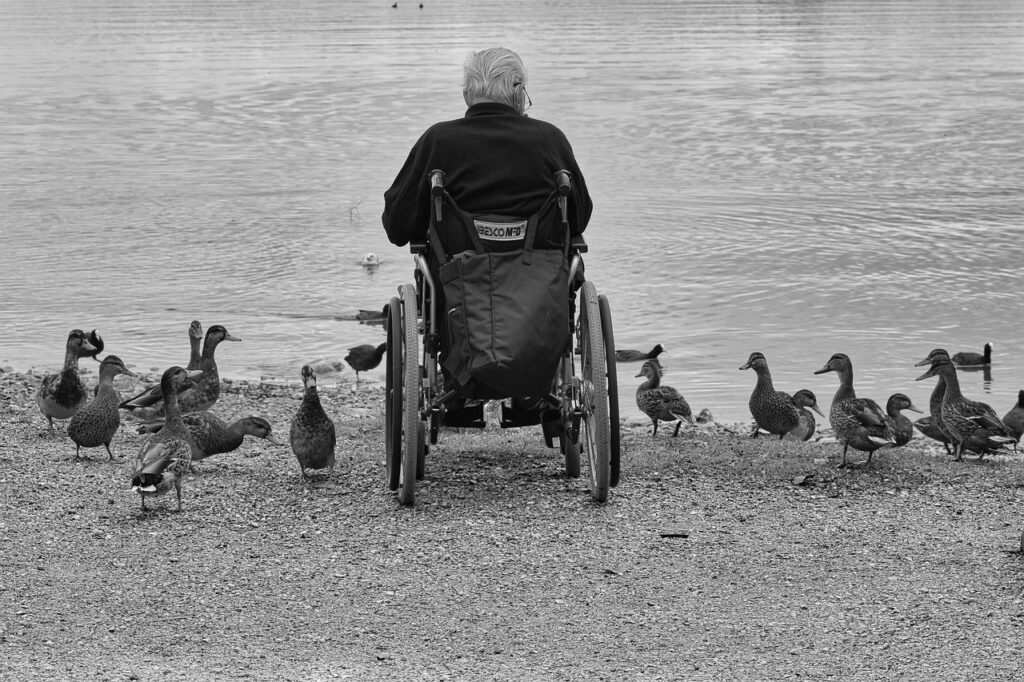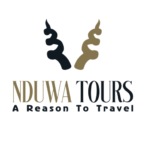Tanzania Wheelchair Accessible Safari
The bucket list dream of taking a Tanzania safari has never been more achievable for travelers with mobility issues. Advances in wheelchair accessible accommodation and transport, but most of all awareness among holiday companies, mean that if you’re ready to rough it a little then the world is your oyster on wheelchair accessible safaris.Tanzanian bush, where the terrain is unpredictable and wild animals roam, might seem off-limits for wheelchair accessible holidays. In fact, safaris in Tanzania and several other African countries have never been so open for people with mobility issues, with many tour operators tailoring their tours to ensure that these bucket list experiences are open to all. Some parks do now have specially designed or adapted wheelchair accessible vehicles for their game drives but in the majority of cases you will simply be quickly lifted in and out by the rangers.
You can push your boundaries with an epic, two-week safari holiday in Tanzania that takes in the iconic Serengeti National Park, Ngorongoro Crater and spectacular Lake Manyara National Park over the Great Rift Valley of East Africa, or a shorter taster that focuses on the Arusha National Park. The wildlife here includes giraffes, zebras, buffaloes and the different species of birds.You’ll be able to stay in compact accommodations where tents are pitched close together, so you don’t have many long journeys to make. Massages are available in some lodges, too, a very pleasant way to unwind after a day on the trail.
Tanzania: As a safari big hitter, Tanzania’s ‘Northern Circuit’ is another top safari destination that can be navigated by road. Starting in Arusha town, you’ll go through jaw-dropping spots like Arusha Town, Arusha National Park, Lake Manyara National Park, Tarangire National Park and two of the most outstanding wildlife reserves in the world: the Serengeti National Park and Ngorongoro Crater. The Crater has some of the easiest Big 5 game viewing in the world – it’s not unusual to see elephant, leopard, lion, buffalo and rhino on a single game drive – and the Serengeti is, of course, famous for the annual Wildebeest Migration from about December to June, depending on where you go.
Be upfront about your needs
Our Safari Experts are trained to hone in on our clients’ needs, wants and expectations from Day One – it’s how we’ve delivered many of our successful Tanzania safaris since 2022. Don’t be shy of detailing what you need to be in place to have a comfortable vacation: your personal Safari Expert will try their utmost to make it happen. Clear communication is vital – if you need a commode, a roll-in shower or an inter-connecting suite for a helper, please don’t be shy to say so. We’ve even rented wheelchairs for mobility-impaired clients for their holiday to Tanzania. Our aim is to deliver a safari that delights you in every way possible.
Wheelchair accessible safaris in Tanzania
Okay, get ready for some temptation that’s seriously hard to resist. With a wheelchair accessible safari in Tanzania not only can you see the Big Five: lion, leopard, rhinoceros, buffalo and elephant, in Serengeti National Park, but you can also drive the famously beautiful Ngorongoro Crater, and even finish off with an idyllic beach retreat in Zanzibar. But don’t pull out your credit card just yet, there’s more to tell.
The situation for wheelchair users in Tanzania is still tricky at times, but improving. The number of safari lodges with level access is increasing, and wheelchair accessible or open plan, ground floor rooms are available in many places now. You can arrange door-to-door transfers for convenience, and tailor made itineraries ensure that the attractions, and the restaurants, that you visit are all accessible too.
Note that in most cases wheelchair users are physically lifted into and out of the safari jeeps by the rangers and guides; adapted vehicles are still few and far between. For that reason it’s important to let the operator know beforehand your approximate weight and the severity of your disability.
Be open to the safari lodges that can accommodate you
Not every hotel, resort or lodge or camp is equipped to provide wheelchair users with efficient service. Look for camps and lodges that have or are the following:
- Not built on cliffs or hilltops: Accommodation built on the side of mountains is likely to have multiple levels and lots of staircases – lifts or elevators are unknown in the middle of the bush!
- Are built on flat stretches of land: These are more likely to be on the same level and although they may have a stair or two here and there, these are far easier to deal with via a ramp or a couple of strong staffers. Luckily, flat areas are often in stunning locations like along rivers, on open plains or on pans.
- Have walkways between tents and mess areas: Some camps have only sandy or earth walkways, which can be tricky for wheelchairs. Gravel paths can also be hard to navigate. Ask if the accommodation has wooden or paved pathways.
- Have outdoor showers: Showering outside is a safari tradition – it’s a lot of fun to be under the sun or moon and to have nature all around you. Outdoor showers on decks are often a lot more spacious than indoor ones plus there aren’t ledges or doors to navigate.
- Has 24/7 power: Although solar lights and lanterns are very romantic, they can be tricky to manage. Consider opting for a lodge that has conventional electricity as this will make your life much easier.
Sit up front: Most game-drive vehicles require some climbing, especially ones with raised seating. If possible, request to sit up front with the driver-guide as the seat will be much easier to get in and out of. The bonus is that this provides a much smoother ride – the further back you sit, the bumpier the journey will be especially on dirt or potholed roads
Other Important tips
- Take spares: If you can, take items like a puncture-repair kit for your tyres as these won’t be widely or easily available should you spring a leak, for example.
- Get a full medical check-up: Chat with your doctor or travel clinic about any concerns around vaccinations, prescriptions and so on before you leave. Activities like gorilla trekking require very good health to ensure human diseases like flu are not passed onto the vulnerable primates.
- Make sure your travel insurance is comprehensive: Double-check that you are covered sufficiently in the unlikely case of an emergency.
- Secure any equipment in advance: If you require oxygen tanks, catheters or any other specialized equipment, ensure that it is available and ready to use at your destination.
- Take copies of your prescriptions: Get your doctor or pharmacist to list the generic active ingredient as some medications go under different names across the world.
- Book sooner rather than later: Wheelchair-accessible suites are limited as are inter-connecting or family ones, especially during peak season (about July to October). It’s best to book six to nine months in advance to ensure you get the kind of accommodation you want.
- Don’t be shy: If you need a push or to have the furniture in your room reconfigured, just ask. Safari staff offer fantastic service and put the comfort and satisfaction of their guests first. Don’t be embarrassed to make a simple or reasonable request that can make your African safari much more pleasant.
- Take as direct a flight as possible: It’s worth spending a little extra not to have long layovers or multiple changes of plane.
- Take a day to acclimatize: Many travelers are so eager to get on safari as quickly as possible that they discount spending a night in Arusha as a ‘waste’. Our opinion is that no time spent anywhere in Tanzania is a ‘waste’! A night at a great hotel, with a good night’s sleep and delicious food, helps you shake off the jet lag and sets you up for those early morning wake-up calls on safari.


